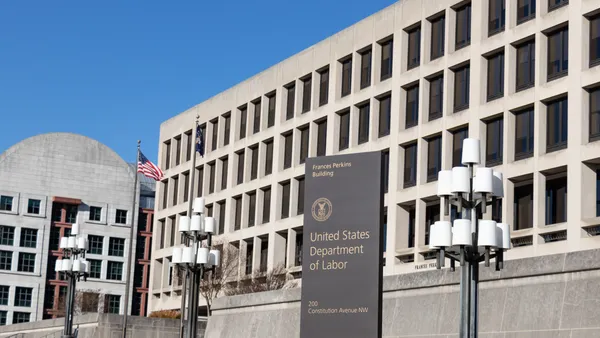Companies might not like that they have a higher burden than the government in showing a merger won’t reduce competition, but that’s the way antitrust law is written and empirical evidence is on the government’s side, says Michael Kades, a deputy assistant attorney general at the Department of Justice.
Under Section 7 of the Clayton Act, the government only needs to show there’s a reasonable probability a merger will substantially reduce competition. That means there can be a less than 50% chance the merger will reduce competition and the government will have met its burden.
“Section 7 does not require that the harm be more likely than not,” Kades said last week at Global Competition Review Live. “As long as the harm is reasonably probable, Section 7 bars some mergers that are more likely than not to have no — or even a positive — effect on competition.”
Companies, on the other hand, have to show no threat to competition remains even if they provide rebuttal evidence that entry and efficiencies will result from the merger.
“Evidence that entry or efficiencies may occur, or can occur or are even likely to occur, can all be consistent with a transaction that may, or threatens to, substantially lessen competition,” he said.
Structural presumption standard
Kades used his remarks to defend the government’s use of the so-called structural presumption, which views mergers as presumptively illegal if they significantly increase concentration in an already concentrated market.
Kades didn’t mention the government’s win in court in late 2022 when it stopped two of the five biggest book publishers from merging, but the facts of the case speak to the structural presumption because the publishing market, already highly concentrated, would have been made more concentrated by the merger.
Economists representing opposing points of view have conducted research supporting the validity of the structural presumption, he said. “In a field still rife with debates and disagreements, a remarkable number of economists have written in recent years to defend reliance on structural presumptions,” he said.
Under the revised merger guidelines DOJ and the Federal Trade Commission released last year, a merger is considered meeting the structural presumption standard if it would add 100 points to the 1,800 threshold under the Herfindahl-Hirschman Index – a concentration standard – and would give the merged company a 30% market share.
Based on how the first court case – FTC v. IQVIA – was decided since the new guidelines came out, the government has gotten this right, Kade suggested.
“FTC v. IQVIA explicitly rejected the defense bar’s criticisms of the 30% presumption in the guidelines,” he said. “The court [found] that the merging parties’ 30.6% market share triggered a structural presumption.”
Bottom line: The two most contentious issues in merger litigation – Section 7 of the Clayton Act and the structural presumption – place a heavy burden on companies. It’s not enough for them to show efficiencies and entry may result from a merger; they have to show no threat to competition remains. The government, meanwhile, only has to show there’s a reasonable probability the merger will substantially reduce competition.











